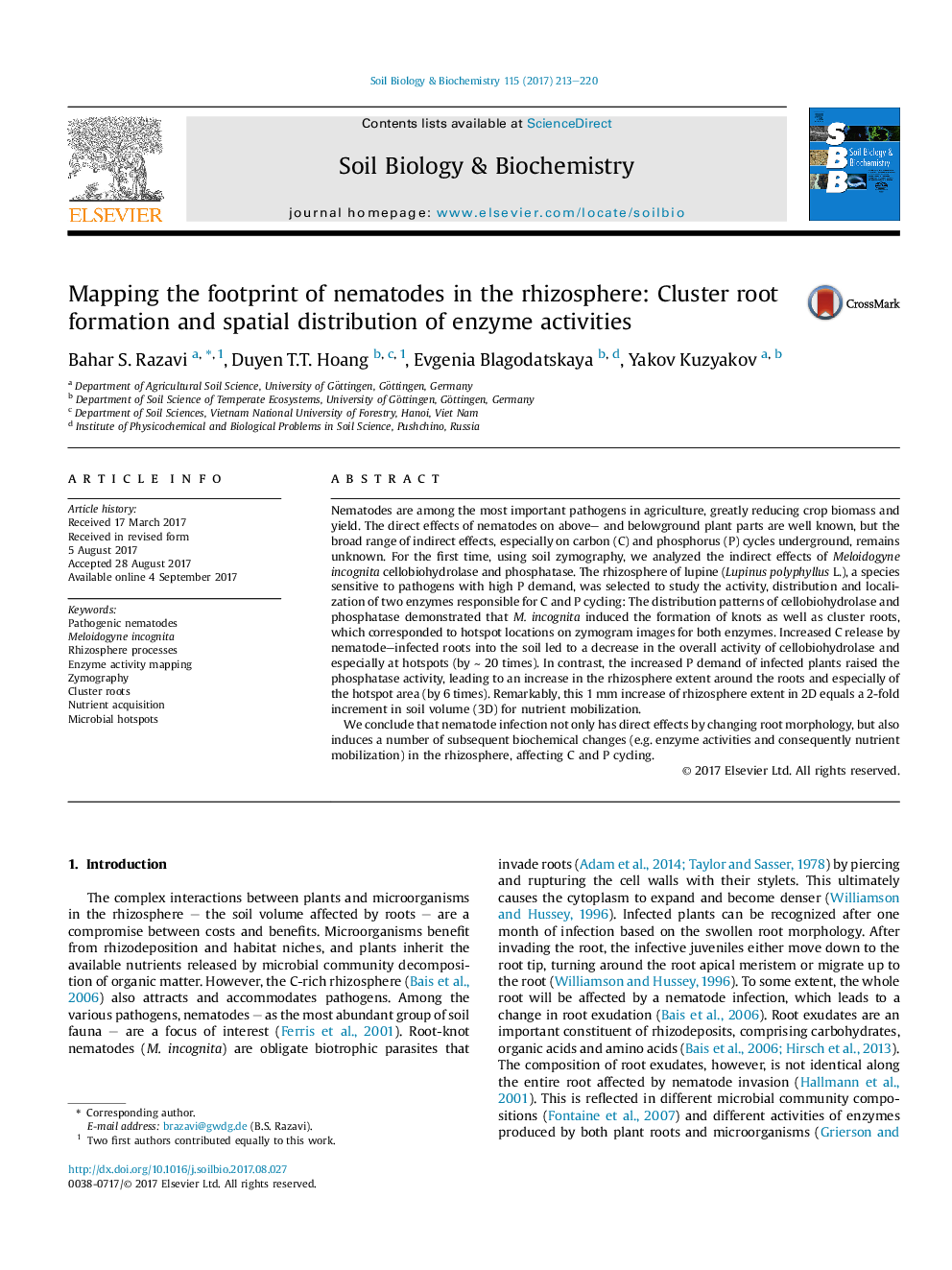| Article ID | Journal | Published Year | Pages | File Type |
|---|---|---|---|---|
| 5516242 | Soil Biology and Biochemistry | 2017 | 8 Pages |
â¢Nematode (Meloidogyne incognita) influence activity, distribution and localization of C- and P-cycling enzymes responsible.â¢M. incognita induced the formation of knots as well as cluster roots.â¢Cellobiohydrolase activity and its hotspots decrease due to nematode invasion.â¢Phosphatase activity increases, leading to its higher hotspot area around the roots.
Nematodes are among the most important pathogens in agriculture, greatly reducing crop biomass and yield. The direct effects of nematodes on above- and belowground plant parts are well known, but the broad range of indirect effects, especially on carbon (C) and phosphorus (P) cycles underground, remains unknown. For the first time, using soil zymography, we analyzed the indirect effects of Meloidogyne incognita cellobiohydrolase and phosphatase. The rhizosphere of lupine (Lupinus polyphyllus L.), a species sensitive to pathogens with high P demand, was selected to study the activity, distribution and localization of two enzymes responsible for C and P cycling: The distribution patterns of cellobiohydrolase and phosphatase demonstrated that M. incognita induced the formation of knots as well as cluster roots, which corresponded to hotspot locations on zymogram images for both enzymes. Increased C release by nematode-infected roots into the soil led to a decrease in the overall activity of cellobiohydrolase and especially at hotspots (by â¼Â 20 times). In contrast, the increased P demand of infected plants raised the phosphatase activity, leading to an increase in the rhizosphere extent around the roots and especially of the hotspot area (by 6 times). Remarkably, this 1 mm increase of rhizosphere extent in 2D equals a 2-fold increment in soil volume (3D) for nutrient mobilization.We conclude that nematode infection not only has direct effects by changing root morphology, but also induces a number of subsequent biochemical changes (e.g. enzyme activities and consequently nutrient mobilization) in the rhizosphere, affecting C and P cycling.
Graphical abstractDownload high-res image (178KB)Download full-size image
